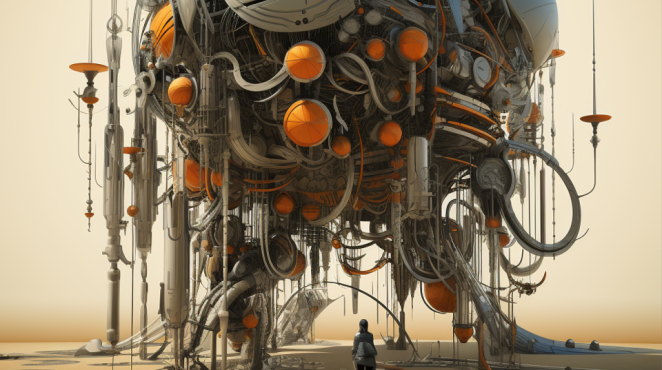Advertising is host to a burnout epidemic. From the outside, the industry is portrayed as a glamorous home for creatives to turn their skills into a career. But, in reality, newcomers find themselves pouring long hours into menial tasks that no one else wants to do and rarely fire up their imaginations.
Overworked, unfulfilled, and underpaid, many eventually throw out their rose-tinted glasses, resulting in a “hollowing out in the middle” of the industry and a record churn rate of 32%.
Could AI come to the rescue of burned-out talent? Despite valid fears that AI will devalue creative work, the industry has an opportunity to use AI to supercharge it. Much of the labour that leads to creative disillusionment is made up of the number-crunching and data-wrangling tasks that AI engines excel at.

Let these machines do what they do best, and advertising can progress to the promised land of fewer and more fulfilling hours; an environment where creatives can thrive.
How did the advertising industry’s professionals become so overwhelmed?
Pierre Naggar, Director of Sales at MINT, examines the ad industry’s creative crisis, explains why this environment is not sustainable in the long run, and explores the many tasks that can be safely handed over to AIs. Because if the industry is serious about reversing its creative brain drain, it must use AI to support, rather than replace, this vital talent.
1. More data than they know what to do with
GPDR and a wave of similar regulations closed the taps on the free flow of consumer data across the web. As a result, first-party data and the insights contained within surged in value, and collecting and activating it became a top priority for brands and agencies alike.
Where first-party data isn’t available, brands and agencies turn to regulatory-compliant second and third-party sources, which can open a can of compatibility worms.
2. More plates to spin in omnichannel campaigns
Alongside this rapid change in the data ecosystem, advertising has become a more omnichannel affair as brands try to spread their reach to align with increasingly fragmented media consumption.
Advertisers now have to layer multiple streams of data on top of each other to plan, execute, and monitor campaigns with minimal overlapping impressions and wasted spend. A successful omnichannel campaign often includes multiple platforms, partners, and ad tech solutions.
3. More chefs in the kitchen due to in-housing trend
On top of this, brand/agency relations have become hybridised, with some functions performed in-house, and others by agencies, on an ad hoc basis. Without a clear and predictable delineation of responsibilities, simply keeping all parties involved in campaign delivery on the same page has become much more complex and can undermine the intended efficiencies of in-house teams.

When we consider this triple-whammy, it’s no wonder advertising professionals are feeling under pressure. They have to handle more data, keep track of more moving parts, and take on new responsibilities, all of which distract from the creative and strategic aspects of the job that, not long ago, would have been the bulk of their day.
A legion of data scientists and software developers could help brands and agencies out of this rut, but are in high demand and short supply across many sectors, adding a salary premium to hiring costs.
Fortunately, the advertising industry has been host to an array of AI-driven innovations, which are able to automate and accelerate complex tasks and provide relief to staff that have been stretched thin. AI can perform data matching and translation at rapid speed, while natural language processing allows data queries to be made by people without specific technical knowledge required.
Omnichannel campaign management, media scheduling, activation, trafficking, and optimisation can all be largely automated with human input steering the top-level strategy. AI has also been central to the push for interoperability across the dizzying array of channels and platforms that make up advertising’s supply chain, with AIs serving as a highly accurate and efficient “translator” of the data and insights that move between them.

While the technology in the background of AI tools and platforms is cutting edge, for the end-user they can deliver the “it just works” experience that made Apple interfaces so popular. The history of technology has shown us that people put a premium on convenience, and today’s scattered and overwhelmed advertising industry is on the cusp of a convenience revolution that will allow everyone to do more with less.
AI will be vital to attracting the next generation of advertising talent
We do not yet know whether AI will be an accelerator of existing trends or a revolution on the scale of the internet that ushers in entire new industries and roles. What we can be sure of is that — unlike the spread of the internet, which was constrained by the gradual rollout of infrastructure — AI will proliferate rapidly across today’s connected world, at which point being familiar with how to utilise it will be a competitive advantage in the job market.
The data-heavy advertising sector’s head has an opportunity to position itself as an industry of the future. Its headstart in digitisation, machine learning, and large language models has created an environment where young talent can get hands-on with AI tools to gain mastery over the interconnected media ecosystem, and pick up transferable skills along the way. Attracting the next generation and accelerating their AI training will be vital to reversing advertising’s “worst ever” talent crisis.

After all, it’s the coming generations who are going to be “AI natives”, as familiar with AI as today’s digital natives are with the internet. If AI is to achieve its full potential in advertising (and beyond), it will need an injection of fresh ideas from those without preconceived notions about how things are done, who will see not using AI as strange as not using email.
This transition is inevitable, and the fast-moving advertising industry is well-suited to adapt to it, providing exciting and dynamic opportunities that straddle the tech, data, and creative worlds.
The question is not whether AI can solve the talent crisis, or how solving the talent crisis can deliver AI innovations, but understanding how the two questions overlap. It’s here that we will find answers to what the next evolution of the advertising industry will look like, where the potential of both humans and machines are maximised and taken to heights we cannot yet imagine.





GEORGE PODOSKI September 15th, 2023, in the morning
Nice to see my imagery being used and credited. Thanks